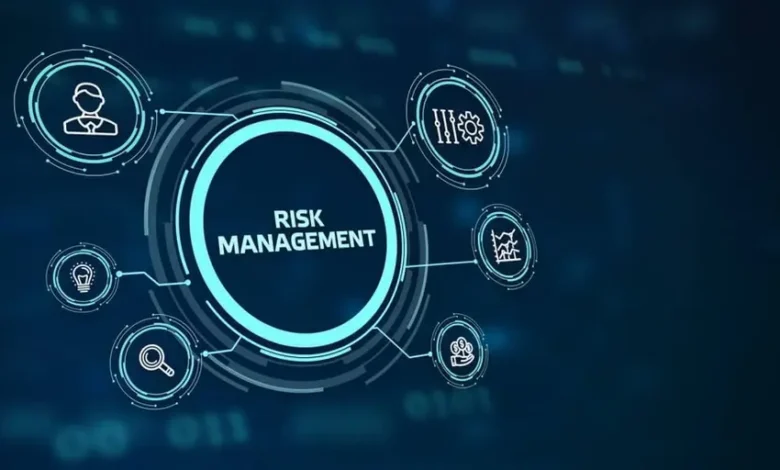
Risk management is a critical process that involves identifying, assessing, and prioritizing potential threats to an organization. By systematically analyzing risks, businesses can implement strategies to mitigate or eliminate them. Effective risk management not only protects assets but also enhances decision-making and fosters a proactive culture. In today’s dynamic environment, understanding risk management is essential for sustaining growth and achieving long-term objectives.
Identifying Risks in Your Organization
The first step in risk management is identifying potential risks that could impact your organization. This involves a comprehensive analysis of internal and external factors, including financial uncertainties, operational challenges, and market fluctuations. By thoroughly identifying risks, businesses can prioritize them based on their likelihood and potential impact. Effective risk management ensures that no critical threat goes unnoticed, allowing for timely intervention and resource allocation to address vulnerabilities.
Assessing and Analyzing Risks
Once risks are identified, the next phase in risk management is assessing and analyzing their potential effects. This involves evaluating the probability of each risk occurring and the severity of its impact on the organization. Tools such as risk matrices and SWOT analysis are commonly used in this process. Through meticulous assessment, risk management enables businesses to prioritize risks, focusing on those that pose the greatest threat. This systematic approach ensures that resources are allocated efficiently to manage and mitigate high-priority risks.
Developing Risk Mitigation Strategies
Developing effective risk mitigation strategies is a cornerstone of risk management. These strategies involve creating plans to reduce the likelihood or impact of identified risks. Common approaches include risk avoidance, where certain activities are eliminated; risk reduction, which involves implementing controls to minimize risk; and risk transfer, such as purchasing insurance. By proactively addressing potential threats, risk management helps organizations maintain stability and resilience in the face of uncertainty.
Implementing Risk Management Frameworks
Implementing a robust risk management framework is essential for systematically handling risks. Frameworks like ISO 31000 provide standardized guidelines for risk management processes, ensuring consistency and effectiveness. A well-structured framework includes policies, procedures, and tools that support risk identification, assessment, and mitigation. By adopting a comprehensive risk management framework, organizations can enhance their ability to manage risks proactively and align their risk strategies with overall business objectives.
Monitoring and Reviewing Risks
Continuous monitoring and reviewing of risks are vital components of effective risk management. This ongoing process ensures that risk profiles remain up-to-date and that mitigation strategies are functioning as intended. Regular audits, performance reviews, and feedback loops help organizations detect new risks and evaluate the effectiveness of existing controls. Through diligent monitoring, risk management enables businesses to adapt to changing circumstances and maintain a strong defense against emerging threats.
Integrating Risk Management into Business Strategy
Integrating risk management into the overall business strategy is crucial for achieving organizational goals. This alignment ensures that risk considerations are embedded in decision-making processes and strategic planning. By incorporating risk management into the business strategy, organizations can anticipate potential challenges and seize opportunities with greater confidence. This holistic approach fosters a culture of risk awareness and resilience, enabling businesses to navigate uncertainties while pursuing growth and innovation.
The Role of Technology in Risk Management
Technology plays a significant role in enhancing risk management practices. Advanced tools and software solutions facilitate the identification, analysis, and monitoring of risks with greater accuracy and efficiency. Data analytics, artificial intelligence, and machine learning can predict potential threats and provide actionable insights for risk mitigation. By leveraging technology, risk management becomes more dynamic and responsive, allowing organizations to stay ahead of potential risks and make informed decisions swiftly.
Building a Risk-Aware Culture
Building a risk-aware culture is essential for the successful implementation of risk management. This involves educating employees about the importance of risk management and encouraging proactive behavior in identifying and addressing risks. A risk-aware culture promotes open communication, accountability, and collaboration, ensuring that everyone in the organization understands their role in managing risks. By fostering such a culture, risk management becomes an integral part of daily operations, enhancing overall organizational resilience.
Measuring the Success of Risk Management
Measuring the success of risk management initiatives is crucial for continuous improvement. Key performance indicators (KPIs) and metrics are used to evaluate the effectiveness of risk management processes and strategies. Common KPIs include the number of risks identified, the percentage of risks mitigated, and the reduction in loss or damage from risks. By regularly assessing these metrics, organizations can identify areas for enhancement, ensuring that their risk management efforts remain effective and aligned with their evolving needs.
Conclusion
Risk management is an indispensable aspect of modern business operations, providing a structured approach to identifying, assessing, and mitigating potential threats. By integrating risk management into strategic planning, leveraging technology, and fostering a risk-aware culture, organizations can enhance their resilience and ensure long-term success. Effective risk management not only protects assets but also empowers businesses to navigate uncertainties with confidence and agility. Embracing comprehensive risk management practices is essential for sustaining growth and achieving organizational goals in an ever-changing landscape.
Frequently Asked Questions
1. What is risk management?
Risk management is the process of identifying, assessing, and prioritizing potential risks to an organization, followed by the application of resources to minimize, monitor, and control the probability or impact of unfortunate events.
2. Why is risk management important for businesses?
Risk management is crucial as it helps businesses anticipate potential threats, reduce losses, ensure operational continuity, and make informed decisions that align with their strategic objectives.
3. What are the key steps in the risk management process?
The key steps include risk identification, risk assessment, risk mitigation, implementing risk management frameworks, monitoring and reviewing risks, and integrating risk management into business strategies.
4. How does technology enhance risk management?
Technology enhances risk management by providing advanced tools for risk identification, analysis, and monitoring. Technologies like data analytics, AI, and machine learning offer predictive insights and improve the accuracy and efficiency of risk management processes.
5. How can a company build a risk-aware culture?
A company can build a risk-aware culture by educating employees about risk management, encouraging proactive risk identification and reporting, fostering open communication, and integrating risk management into daily operations and decision-making processes.





